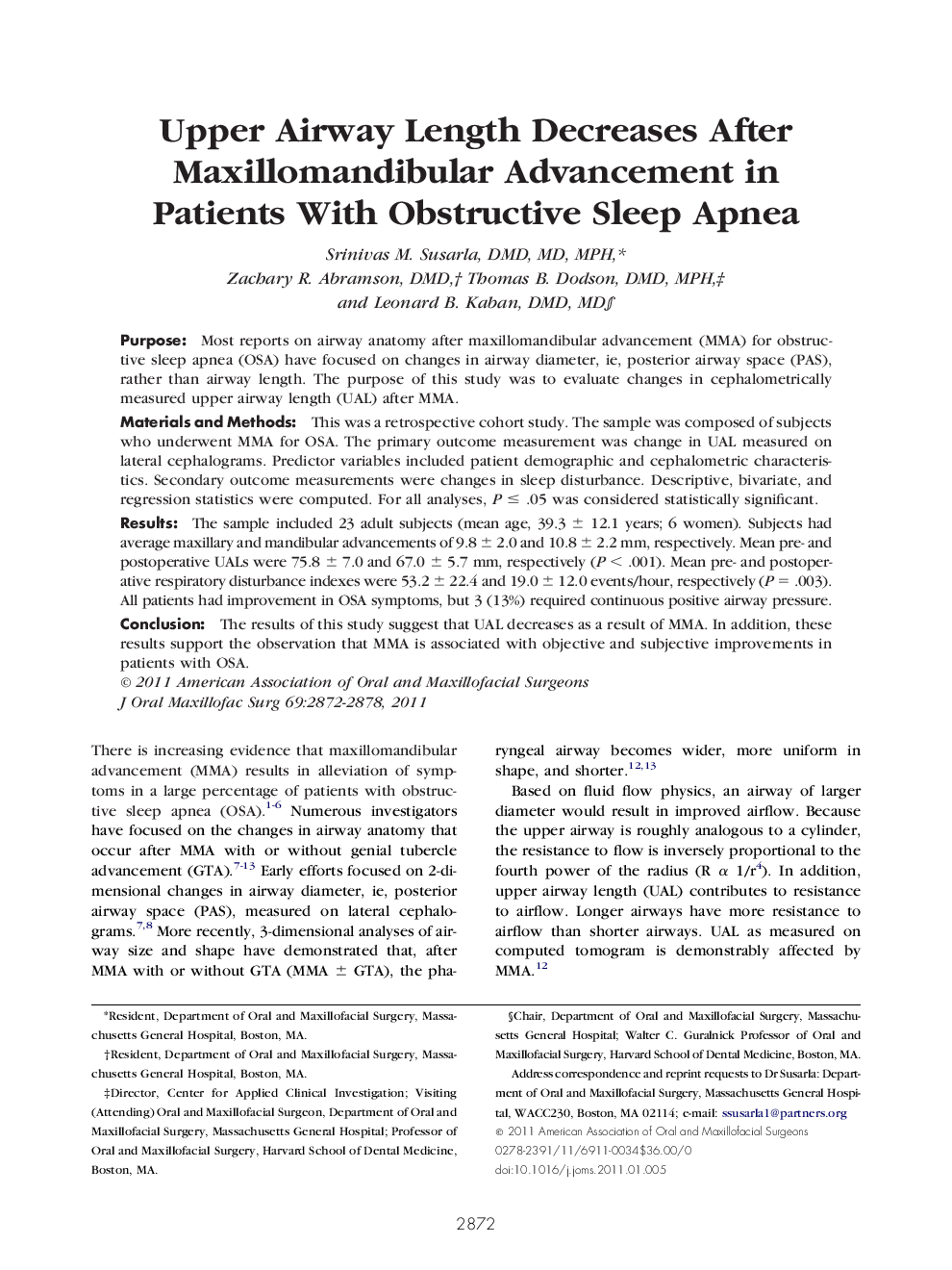| کد مقاله | کد نشریه | سال انتشار | مقاله انگلیسی | نسخه تمام متن |
|---|---|---|---|---|
| 3154088 | 1198042 | 2011 | 7 صفحه PDF | دانلود رایگان |

PurposeMost reports on airway anatomy after maxillomandibular advancement (MMA) for obstructive sleep apnea (OSA) have focused on changes in airway diameter, ie, posterior airway space (PAS), rather than airway length. The purpose of this study was to evaluate changes in cephalometrically measured upper airway length (UAL) after MMA.Materials and MethodsThis was a retrospective cohort study. The sample was composed of subjects who underwent MMA for OSA. The primary outcome measurement was change in UAL measured on lateral cephalograms. Predictor variables included patient demographic and cephalometric characteristics. Secondary outcome measurements were changes in sleep disturbance. Descriptive, bivariate, and regression statistics were computed. For all analyses, P ≤ .05 was considered statistically significant.ResultsThe sample included 23 adult subjects (mean age, 39.3 ± 12.1 years; 6 women). Subjects had average maxillary and mandibular advancements of 9.8 ± 2.0 and 10.8 ± 2.2 mm, respectively. Mean pre- and postoperative UALs were 75.8 ± 7.0 and 67.0 ± 5.7 mm, respectively (P < .001). Mean pre- and postoperative respiratory disturbance indexes were 53.2 ± 22.4 and 19.0 ± 12.0 events/hour, respectively (P = .003). All patients had improvement in OSA symptoms, but 3 (13%) required continuous positive airway pressure.ConclusionThe results of this study suggest that UAL decreases as a result of MMA. In addition, these results support the observation that MMA is associated with objective and subjective improvements in patients with OSA.
Journal: Journal of Oral and Maxillofacial Surgery - Volume 69, Issue 11, November 2011, Pages 2872–2878